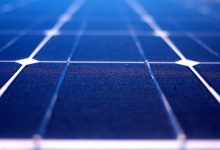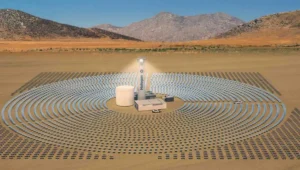Researchers from MIT and the National Renewable Energy Laboratory (NREL) say that new manufacturing techniques and changes in the designs of solar cells could lead to substantial cost reductions and significantly accelerate the rate of manufacture of solar modules.
In a research paper published in the academic journal Energy and Environmental Science, the US-based research team say that modern manufacturing techniques could reduce silicon wafers used in solar cell production cut to just a quarter of their current levels.
Currently, it is common for the silicon wafers used in solar cells to be cut at a thickness of around 160 micrometres, which provides a balance between minimising the amount of hyper-pure silicon required to produce a solar cell, while maintaining sufficient strength and durability.
However, the MIT and NREL researchers tested a range of solar cell designs at declining thicknesses, finding that modern techniques meant it was possible to achieve robust solar cells at a thickness of 100 micrometres. They now believe it could also be possible to produce solar cells of just 40 micrometres in thickness.
Modern manufacturing techniques, that are better able to handle more brittle components like the thinner solar cells, mean it is now feasible to manufacture thinner solar wafers without the same levels of wafer breakage and material loss that plagued earlier manufacturing processes.
The research team found that a shift to thinner solar cells could drive substantial cost reductions, and could potentially reduce manufacturing capex by 48 per cent, module costs by 28 per cent, and reduce the levelised cost of energy from solar PV by 24 per cent.
Solar cells require silicon wafers, cut from silicon “ingots” of very high purity, of at least 99.9999% pure silicon. The production facilities to produce these silicon ingots are capital intensive and have long commissioning times. The supply of hyper-pure silicon is often the limiting factor in growing solar cell production rates.
The move to cut solar cell thickness could provide a way to achieve significant cost reductions, as gains in the efficiency and performance of cells begin to make only incremental improvements.
“Efficiency can only go up by a few per cent. So if you want to get further improvements, thickness is the way to go,” MIT professor of mechanical engineering Tonio Buonassisi said.
In the paper, the researchers say that achieving further cost reductions in solar technologies will be crucial in the efforts to sufficiently decarbonise the global energy system.
“Climate change is a pressing challenge, and the PV community has the potential to address it by contributing more carbon-neutral electricity. Even with today’s cost structure, we show that the adoption of thinner wafers still provides very significant capex reductions and considerable cost reduction,” the paper says.
The researchers studied the performance of a range of solar cell designs using thinner silicon wafers, including the passivated-emitter rear-contact (PERC) solar cell architecture developed in Australia at the University of New South Wales and which have become the industry standard, and found that there were negligible impacts on solar cell performance using the skinny wafers.
Manufacturing solar cells a quarter of the thickness would reduce costs, by substantially reducing the amount of expensive hyper-pure silicon required, while also freeing up supplies of silicon that have often been a bottle-neck in the solar cell production process.
“Thin wafers can help the PV industry reach close to 8TW cumulative PV installations by 2030, in comparison with 5TW for the PERC baseline,” the researchers say in the paper.
The researchers believe it is now necessary to take a “technoeconomic” approach to the development of solar photovoltaic technologies, concluding that the cost aspects of solar cell design carry equal importance with achieving further technical breakthroughs like improvements in solar cell efficiency.
“The impact of reducing the amount of silicon used in mainstream cells would be very significant, as the paper points out. The most obvious gain is in the total amount of capital required to scale the PV industry to the multi-terawatt scale required by the climate change problem,” energy analyst Gregory Wilson said.
“Another benefit is in the amount of energy required to produce silicon PV panels. This is because the polysilicon production and ingot growth processes that are required for the production of high efficiency cells are very energy intensive.”










